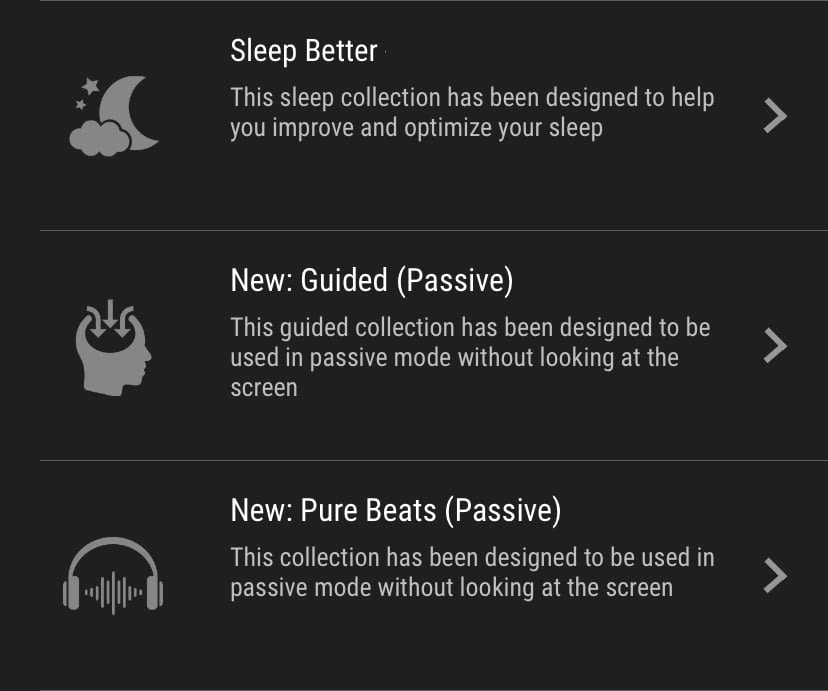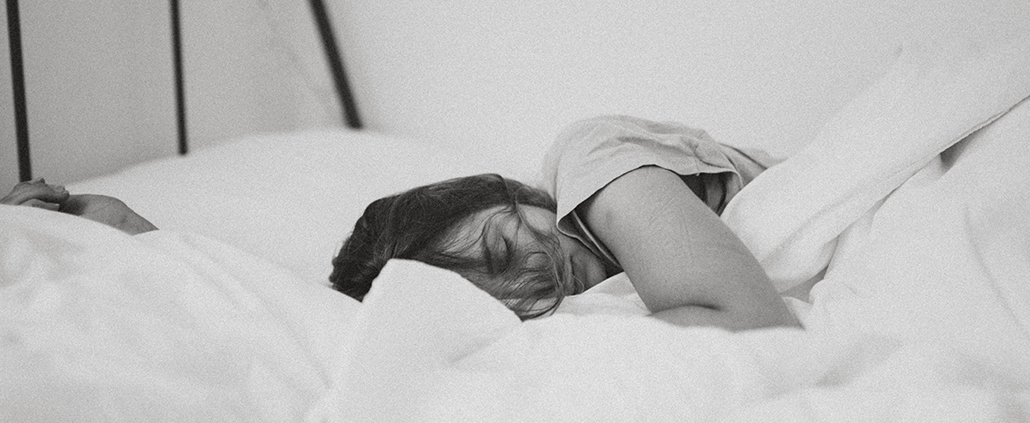A 101 Guide to Binaural Beats
Binaural beats are a form of brainwave entrainment that have been shown to have positive effects on stress, anxiety (1,2), focus (3), motivation, confidence and meditation (4). Binaural beats work when two different frequencies are heard, one in each ear. This creates a third tone, the binaural beat, whose frequency is the difference between the two other tones, e.g. if the tone in one ear is 400Hz and the other is 410Hz, the binaural beat is 10Hz. This binaural beat is shown to have a positive impact on the user’s mindset. It is important to note that stereo headphones are required to achieve a binaural beat since when using a speaker or non-stereo headphones the frequencies are already mixed outside the brain and hence no binaural beat is created.
The various tones of binaural beats affect the user differently. The following tones are used in the Rewire Mindset Recovery System:
- 0.5 – 3.5 Hz – Delta wave for deep sleep
- In a 2018 study, participants who received this frequency during sleep entered deep sleep quicker and for longer (5). This allows participants to gain more of the benefits of deep sleep including physical recovery.
- 4.0 – 6.5 Hz – Theta for meditation/sleep
- A 2017 study showed that even listening to a 6Hz binaural beat for just 10 minutes induced the user’s brain into a state similar to that achieved during meditation (4).
- 7.0 – 12.5 Hz – Alpha for relaxation/dreams
- In a 1990 study, alpha wave binaural beats were shown to have a positive influence on the user’s relaxation (6).
- Try a session here
- 13.0 – 38.5 – Beta for Activity
- It has been shown that beta wave binaural beats can positively affect vigilance performance and mood (3), and a recent 2019 study showed that beta wave binaural beats have a positive impact on long term memory (7).
- It has been shown that beta wave binaural beats can positively affect vigilance performance and mood (3), and a recent 2019 study showed that beta wave binaural beats have a positive impact on long term memory (7).
Binaural beats also have a positive effect in counteracting the negative effects of mental fatigue. A recent 2020 study showed that binaural beats reduce the negative effect of mental fatigue (8). This makes binaural beats an important part of mindset recovery and pre-competition preparation in sports to minimise the negative effects that mental fatigue is shown to have on endurance performance (9,10).
We have put together a demo of our mindset recovery system featuring theta wave binaural beats which you can watch and download below.
You can also try our Binaural Beats sessions for Rest, Recovery or Focus on the Rewire Fitness App for Free.
Our Pure Beats (Passive) collection has been designed to be used in passive mode without looking at the screen. It contains Binaural Beats at different frequencies for rest, recovery and focus. (Note that these sessions must be used with headphones to work properly).
- Rest sessions: These passive recovery sessions include 2.0 Hz Delta Wave Binaural Beats designed for deep relaxation and recovery. These recovery sessions can be repeated as often as needed whenever you are feeling drained or short on sleep. The session lengths range from 2 Minutes to 120 minutes.
- Balance sessions: These passive recovery sessions include 4.0 Hz Theta Wave Binaural Beats designed for achieving a calm meditative state. These recovery sessions can be repeated as often as needed whenever you need help getting into a calm mindset. The session lengths range from 2 Minutes to 120 minutes.
- Focus sessions: These passive focus sessions includes 13.0 Hz Beta Wave Binaural Beats designed for achieving a focused mental state. These sessions can be repeated as often as needed whenever you need help getting into a focused mindset for competition, training or work. The session lengths range from 2 Minutes to 120 minutes.

Related: New Mindset Recovery Collections for Passive, Guided, and Sleep Sessions
You can also hear what binaural beats sound like raw and play around with different tones here.

Join Our Community!
References
1. Padmanabhan R, Hildreth AJ, Laws D. A prospective, randomised, controlled study examining binaural beat audio and pre-operative anxiety in patients undergoing general anaesthesia for day case surgery. Anaesthesia. 2005;
2. Garcia-Argibay M, Santed MA, Reales JM. Efficacy of binaural auditory beats in cognition, anxiety, and pain perception: a meta-analysis. Psychol Res. 2019;
3. Lane JD, Kasian SJ, Owens JE, Marsh GR. Binaural auditory beats affect vigilance performance and mood. Physiol Behav. 1998;
4. Jirakittayakorn N, Wongsawat Y. Brain responses to a 6-Hz binaural beat: Effects on general theta rhythm and frontal midline theta activity. Front Neurosci. 2017;
5. Jirakittayakorn N, Wongsawat Y. A Novel Insight of Effects of a 3-Hz Binaural Beat on Sleep Stages During Sleep. Front Hum Neurosci. 2018;
6. Foster DS. EEG and Subjective Correlates of Alpha-Frequency Binaural-Beat Stimulation Combined with Alpha Biofeedback. 1990;
7. Garcia-Argibay M, Santed MA, Reales JM. Binaural auditory beats affect long-term memory. Psychol Res. 2019;
8. Axelsen JL, Kirk U, Staiano W. On-the-Spot Binaural Beats and Mindfulness Reduces the Effect of Mental Fatigue. J Cogn Enhanc. 2020;
9. Marcora SM, Staiano W, Manning V. Mental fatigue impairs physical performance in humans. J Appl Physiol. 2009;
10. Lopes TR, Oliveira DM, Simurro PB, Akiba HT, Nakamura FY, Okano AH, et al. No Sex Difference in Mental Fatigue Effect on High-Level Runners’ Aerobic Performance. Med Sci Sport Exerc. 2020;Volume Pub.






